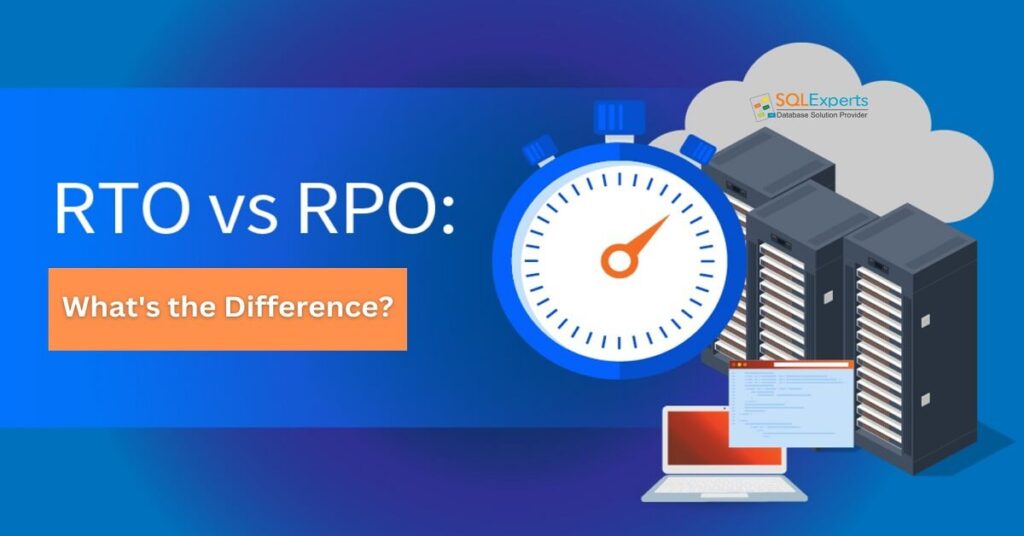Understanding RTO: Key Factors to Determine Your Recovery Time Objective
Owing to the current dynamic and globalized society, corporations encounter numerous possible disruptions, be it in terms of approaches and techniques or resources within the organization. One of the most important goals is to maintain business operations and protect business interests in the face of such threats. Enhancing Business Continuity Planning (BCP) requires, among others, establishing the Recovery Time Objective (RTO). With this in mind, this blog will help you learn What does Recovery Time Objective mean and why it matters while also providing an easy-to-follow guide on how to compute it for your company. Recovery Time Objective Definition Recovery Time Objective (RTO) is defined as the maximum time limit for restoration of the service level and severely affects the organization after such a disruption tolerance for the level of operation of the application system or business function. Put simply, RTO says how long after a disaster shall we back to our capacities negating horrendous implications. Key Points to Consider: Business Impact: The RTO directly relates to the possible business loss due to a system downtime, both financially and reputation wise. RTOs will be lower for systems with a high impact. Recovery Strategies: And a lot of that depends on recovery strategies (backups, failover, disaster recovery plans), which determine your RTO. Service Level Agreements (SLAs): Service-level agreements are usually tied with RTOs because if the SLAs specify any uptime or recovery time, it needs to be maintained. Recovery Time Objective Example: For example, a bank may have an RTO of only five minutes for its core banking systems since even seconds of downtime can result in millions of financial losses as well as customer agony. In contrast, the point-of-sale system in a retail store may have a higher acceptable RTO since an outage can frustrate customers but does not likely cause significant lasting harm. Establishing and maintaining RTOs helps organizations to plan for potential disruptions before they happen as well as their impact on business functions. Importance of RTO in Business Continuity Planning RTO is important to businesses because it helps allocate resources and recovery strategies in the right intervention. It is useful to define how long the organization can afford the down time of each critical function, so as to find the necessary investments in infra-structure, people and processes to recover in time. In the absence of a clear cut RTO, business continuity can be affected by the above causing economic costs, losses in business image and confidence by customers. How Does the Recovery Time Objective Work? This is where the Recovery Time Objective (RTO) comes into play, which provides a specific threshold for how fast an organization must be able to recover following either an outage or disaster. It acts as a target date by which mission-critical systems and applications should be returned to functionality. Take a look at how it works: Assessment — Organizations evaluate the potential impact of outage on various systems and applications. Defining RTOs — After the impact analysis, each system or application would be assigned an RTO. An example could be: a critical system could have an RTO of 30 mins, while another one with less implicated data has an RTO of 4 hours. Developing Recovery Plan — A detailed disaster recovery plan is developed describing how the systems will be restored within the predetermined RTO. This plan includes: Backup strategies — It is essential to keep a backup of data, so that you can recover it. Failover mechanisms — These enable automatic switching to redundant in the event of a failure. Incident response procedures — Guidelines on how to respond to incidents and start recovery. 4. Testing and validation — Regular test runs of the plan can verify performance functionality, helping ensure RTOs will be met. 5. Monitoring and Maintenance — Continuous tracking of systems and infrastructure that can find potential problems and act in advance. By establishing and adhering to RTOs, businesses can minimize the impact of disruptions, maintain business continuity, and protect their reputation. How To Calculate Recovery Time Objective? The process of Recovery Time Objective Calculation follows a step wise process, where business functions are understood and their importance and level of tolerance to downtime is assessed. Let’s begin: 1) Identify Critical Business Functions List Key Processes and Services First of all, we need to take an inventory of all the business processes and services. Distinguish which of them are crucial for everyday conduct of business activities, sales, servicing customers, and adhering to regulatory requirements. This may entail: Sales and Order Processing Customer Support IT Services and Infrastructure Finance and Accounting Supply Chain Management Assess Dependencies and Interdependencies Be able to assess the relationship and interdependence of the functions. A case in point is the IT infrastructure which enables nearly all business activities whereas sales relies on inventory management while customer support is reliant on the IT system. 2) Determine Acceptable Downtime for Each Function Evaluate the Impact of Downtime on Operations Evaluate the impact of unavailability of each function, including but not limited to the following aspects: Financial Losses: Revenue drops, increased operational costs. Operational Disruptions: Halted processes, delayed projects. Reputational Damage: Loss of customer trust, negative publicity. Legal and Compliance Issues: Breaches of regulatory requirements. Consider Stakeholder Expectations Consider the aspirations of every stakeholder encompassing customers, employees, suppliers, and regulators. Their downtime threshold level could differ, and hence meeting those expectations is important for the effective management of trust and compliance. 3) Calculate Total Downtime for Recovery Assess Recovery Strategies Differentiate and assess the techniques at hand to reinstate each of the impeded critical functions. This might involve: Data Backups: Frequency and storage solutions. Redundant Systems: Duplicate systems to take over in case of failure. Alternative Work Locations: Sites where operations can continue if primary locations are inaccessible. Use Historical Data and Benchmarks Utilize historical records of past events and use figures from relevant sectors as a guide in your calculations of RTO. It is useful to
Understanding RTO: Key Factors to Determine Your Recovery Time Objective Read More »




